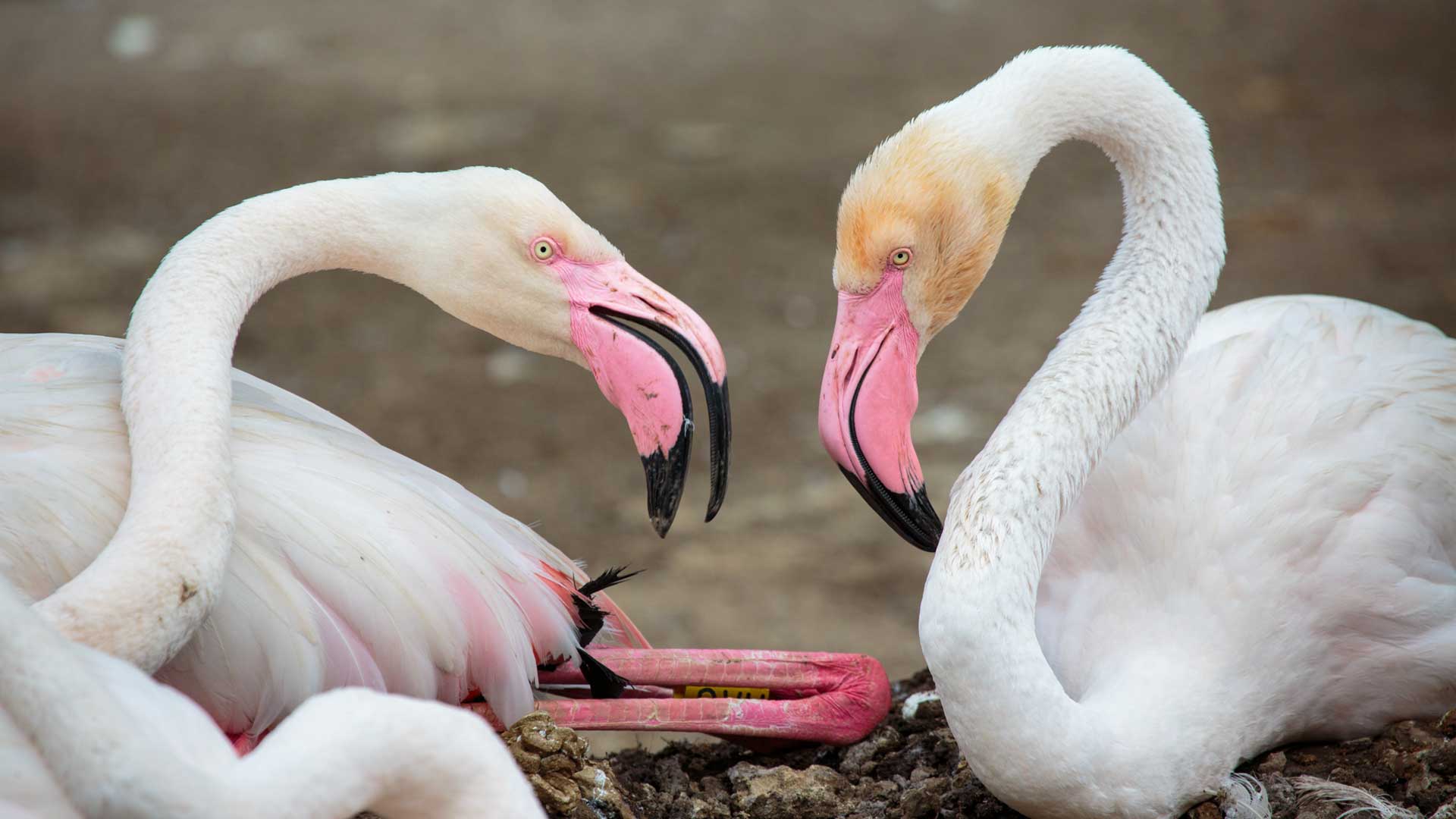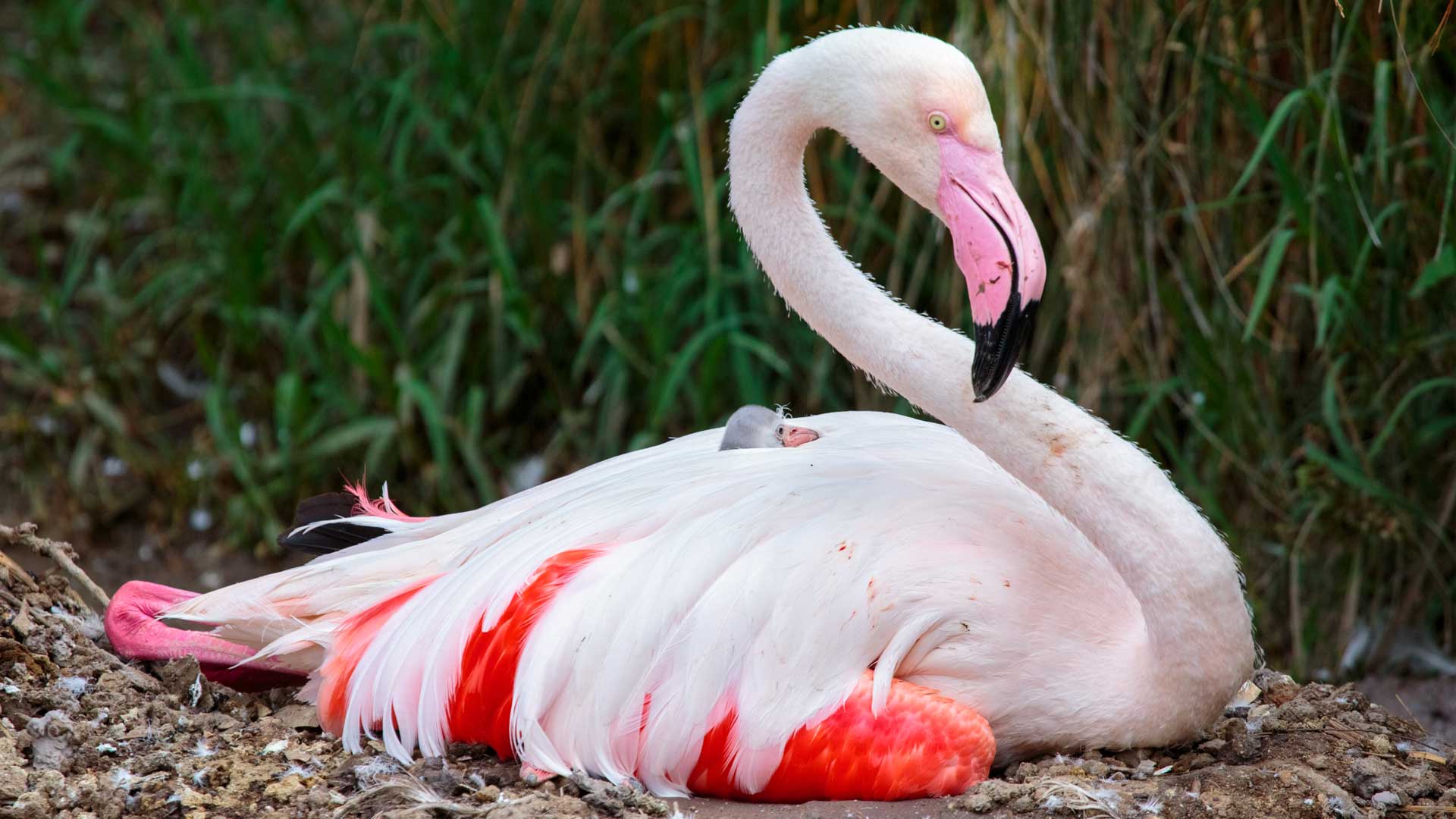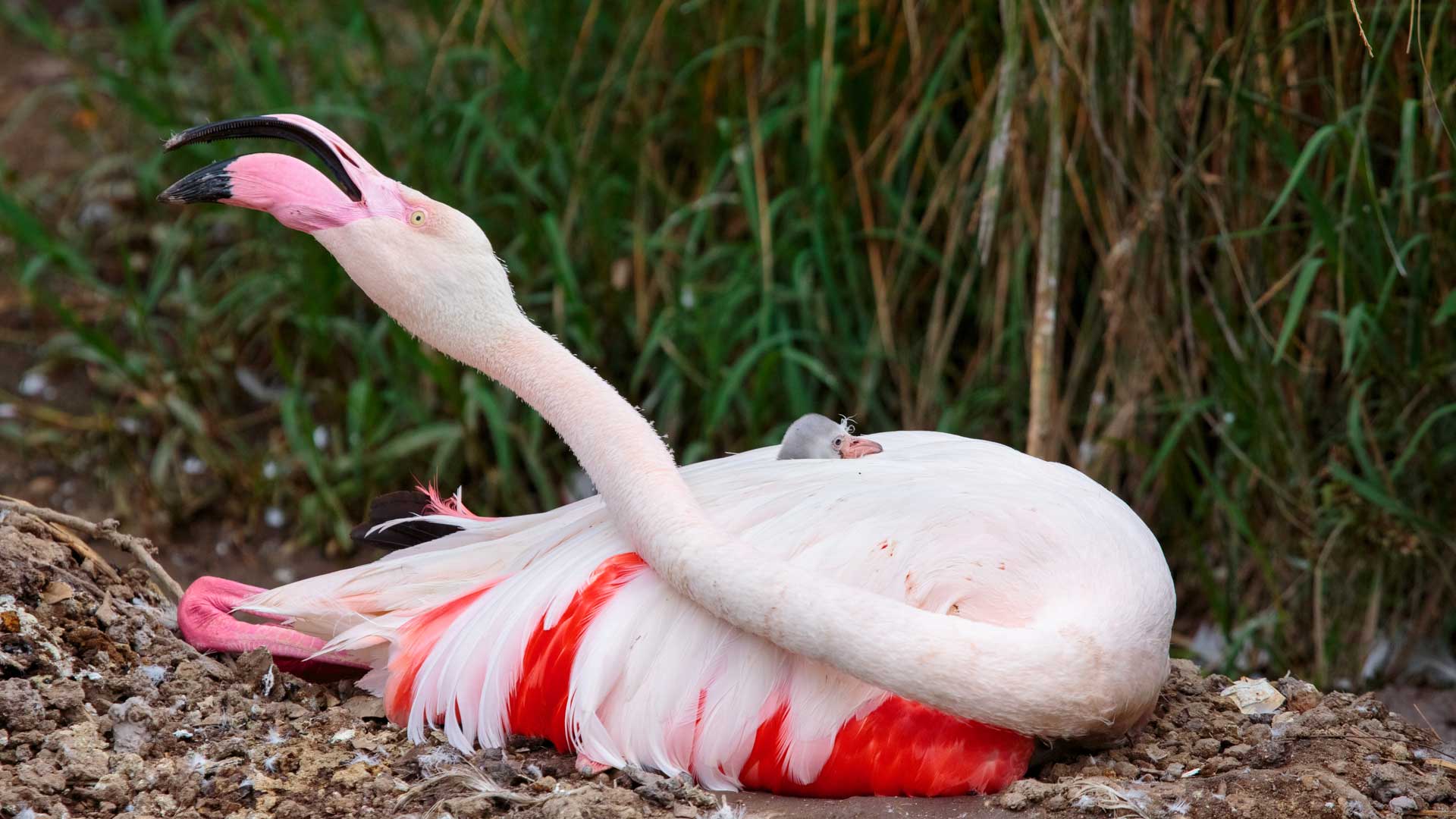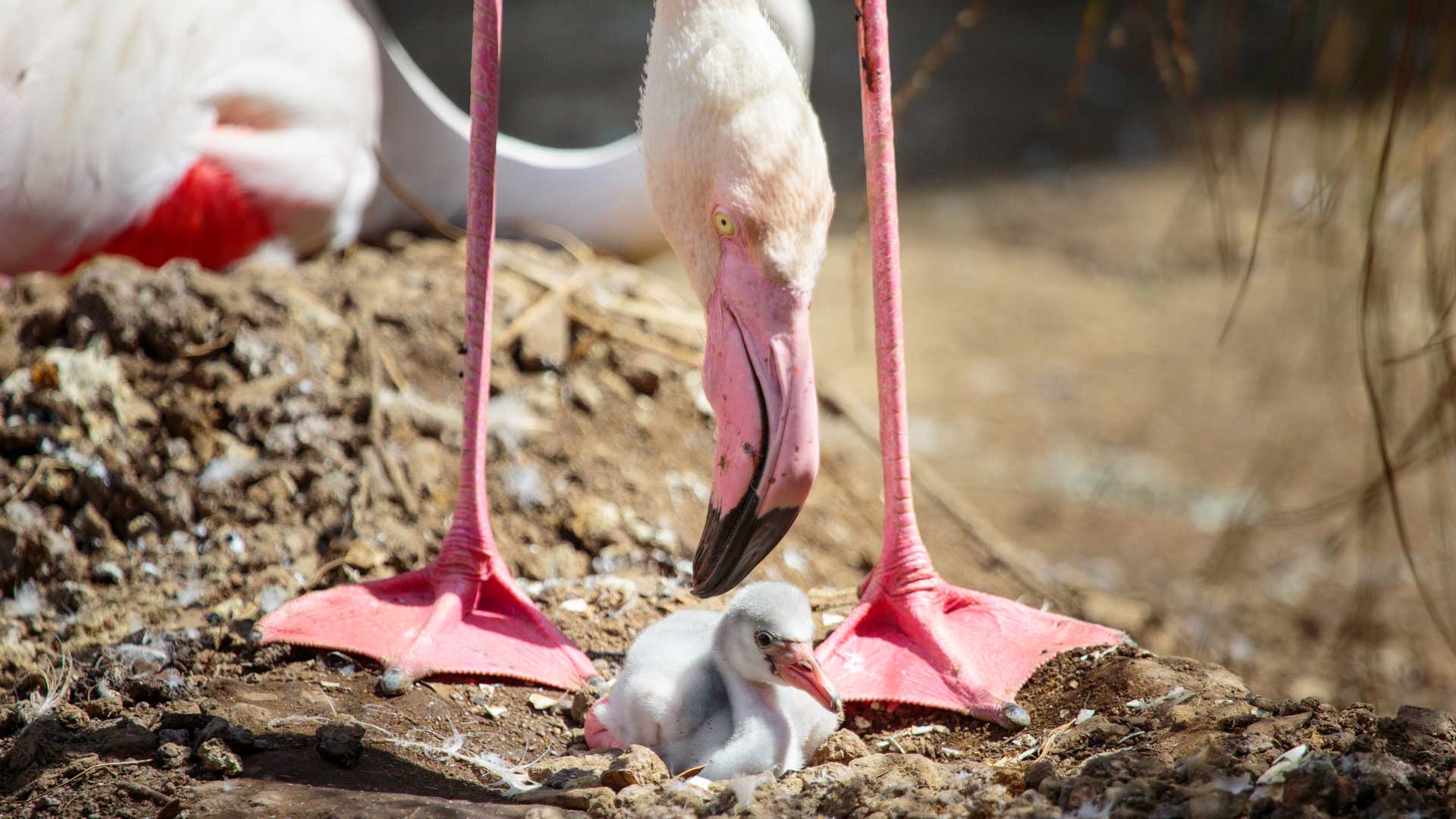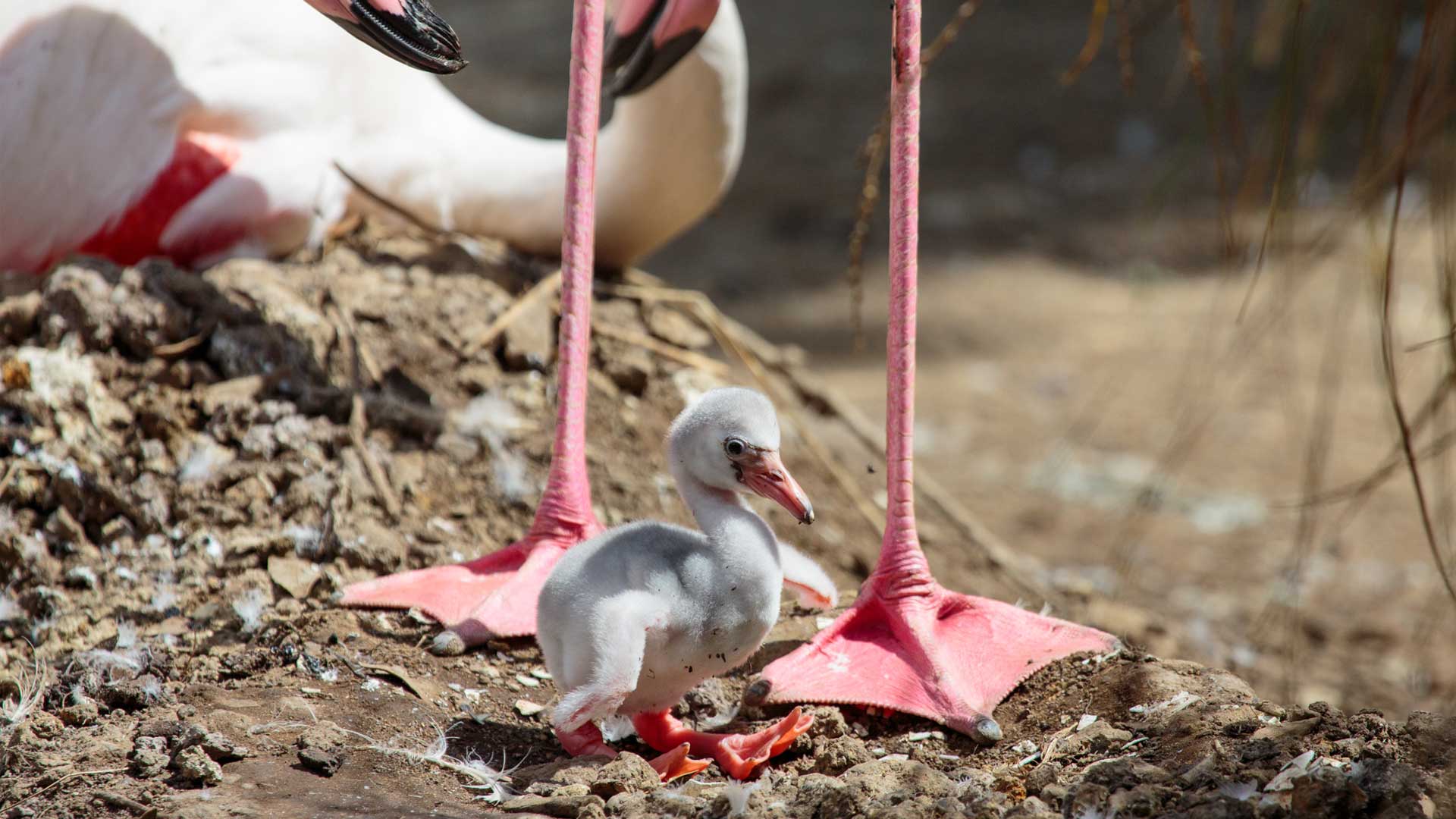Eggs to legs
Flamingos build a nest on the ground out of mud, small stones and feathers. It can take a pair up to 6 weeks to build (still quicker than your average house build)! In the nest, the female will lay a single white egg which the parents take turns incubating. Upon hatching, you would be forgiven in thinking the eggs have been swapped out, as the chicks are born grey! It can take up to a couple of years for them to become pink – how you ask? It is all in their diet. Their colouration comes from carotenoid pigments found in food. It is found naturally in a variety of plants and animals including algae and shrimps.
The long legs and partially webbed feet of a flamingo makes feed times particularly lively – these legs are perfectly adapted to wade into water, whilst stamping their feet on the muddy bottom, mixing up the food particles. They then hold their bill upside down in the water and swish their head from side to side. Inside their bill, it works a little like a sieve. Their huge tongue sucks in water from the front and pushes it out the sides of their bill. Broom-like plates trap and filter out tiny organisms such as shrimp and planktonic algae. Delicious!



